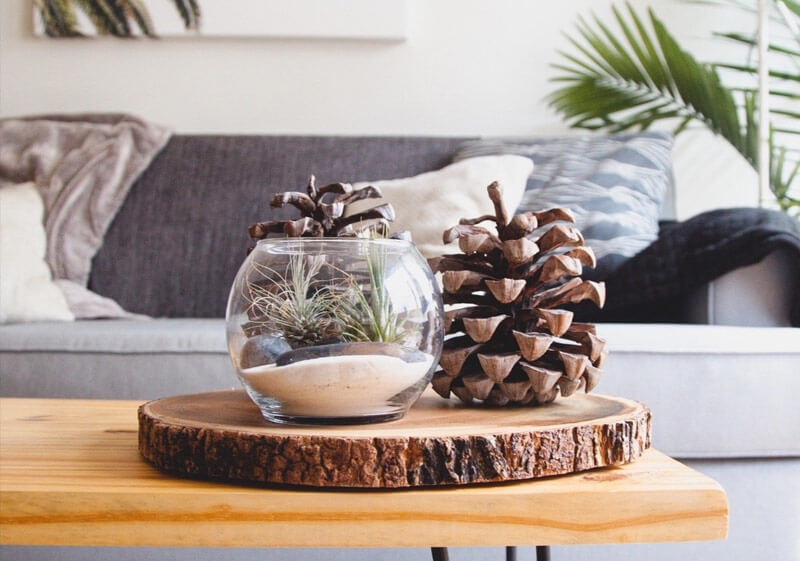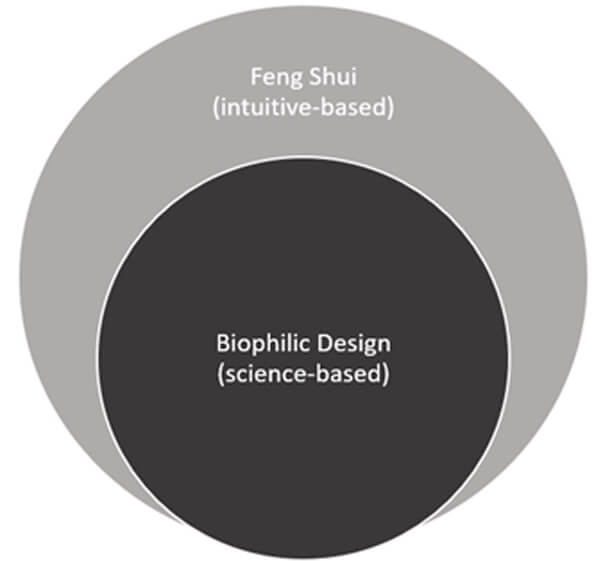Nature nurtures. Biophilic design is based on this fact. But it’s not new.
Our ancestors have recognized this concept for millennia. They observed the ways of nature and understood that those “ways” also impacted our lives. Nearly every indigenous culture had ideas that helped them build the best living spaces; spaces that would allow them to not only survive but thrive. In China, they assembled principles of what we now know as feng shui, over four to five-thousand years ago.
Ancient people recognized that the connection to the land was vital for physical life but also served a role in their spiritual life. They were highly sensitive to their environment and sensed immediate shifts in the spiritual quality of their land, before it would manifest in the physical realm. They had a deep sense of not only stewardship, but equality and interrelationship with the land.
And these ideas eventually developed into what is now known as feng shui. As a feng shui practitioner, back in 2008 I came across one of Stephen Kellert’s online presentations. I immediately saw the connection between feng shui and this emerging discipline. And Professor Kellert was kind enough to meet with me at his office at Yale and discuss both disciplines.
Feng Shui is the Heart and Soul
What I came to understand is this: Feng shui is the heart and soul of biophilic design. And many people working in biophilic design know it instinctively yet are reluctant to claim it.
True that biophilic design would have no place in the ancient world. Ancient humans did not need to “re-connect;” they were not separated from nature as we are now. They spent their days outside and lived in shelters built of local, natural materials. Everything they came into contact was fashioned from nature. Their construction techniques were, for the most part, “low-impact” on the earth. And because they lived so close to nature, they benefited from the restorative qualities of the natural world in their everyday lives.
Feng shui was developed during this time of interrelationship with nature. It was developed slowly and over many millennia by observing the ways of nature and synergizing with it.
A few years ago, at a biophilic design event, I had a conversation with a member of a prominent biophilic consulting firm. It has been acknowledged by her team that feng shui is somehow connected to biophilic design, but they did not have sufficient feng shui knowledge to understand the connections.
What I offer here is some context to the connection between these two design principles.
In fact, biophilic design resides totally within feng shui. It is an evidence-based discipline with measurable guidelines and has been, and continues to be, primarily an objective perspective on how our spaces impact well-being.
Below are some insights into how these disciplines overlap in perspective:
Location – In both disciplines the land itself is #1 importance. In feng shui, the best site has good form of the land for protection from the winds and abundance of fresh flowing water. There is diverse vegetation and wildlife. In short, the ecosystem is healthy and alive. It has vitality. On the spiritual side, this healthy ecosystem translates to a sense of place and belonging to the earth.
Variety – Variety plays a huge role in both disciplines. Diversity in our spaces mimics the natural world. The principle of yin and yang helps us understand that everything is in relationship with everything else. Yin and yang represented in our environment encompasses complementary opposites, such as soft and hard, sunlight and shade, textured and smooth, dark and light, a panorama of color and shape, to name a few.
Part of yin and yang theory includes the five elements of wood, fire, earth, metal and water that represent everything in the universe. These elements provide us the panoply of diversity directly from nature that helps us bring nature into proximity in our spaces. It is not just the natural materials of the elements, but the energy, images, and deeper representations including color, shape, and esoteric symbols. For instance, water represents stillness and contemplation, and therefore, is created through quiet, meditative spaces.
Movement – In our built environment, a prime consideration is the flow of people through the space to be as natural as possible. Pathways should allow for comfort and ease to get us from one point to another. In feng shui this is called the flow of chi. Paths that are narrow, long and straight will funnel people quickly and awkwardly. Ones that are wider and provide more space will allow people to slow down, linger and be more comfortable passing each other.
Placement – Orientation and placement are key to a feeling of wellbeing. Windows that allow for natural light to penetrate the building, as well as provide views of nature are important to health and wellbeing. Command position is the feng shui counterpart to prospect and refuge. Protection from behind as well as a clear view in front has a lot of supportive evidence that people are more relaxed and can function better in these spaces.
The Yin and the Yang
Biophilic design comes from a left-brain, rational approach to our spaces. It is based on guidelines that can be measured and is supported by research. Biophilic design works well in our modern world which often requires, or at least, prefers, the rigor of statistical research. Studies demonstrating that hospital patients recovering from surgery are discharged more quickly when they have views of nature from their hospital bed.
Or, that Reno U.S. postal workers became more productive and efficient when skylights were installed in place of fluorescent lighting.
Feng shui comes from a more intuitive side, the heart. It is based on the feeling of a space which is more elusive and subjective.
Environmental psychology research helps fuel the increasing acceptance of biophilic design as it becomes a growing force in not only commercial and urban projects, but residential, too.
But biophilic design, in its desire to bring greater wellbeing in not only a physical, but mental, emotional, and spiritual perspective will always fall short.
Feng shui, can never be measured or placed in a box according to the rigors of science. However, feng shui can be a great complement to biophilic design projects, to make it all flow, to balance the yang of rational mind and the yin of the intuitive.
These two disciplines become a more complete design solution for human and earth wellbeing in today’s world.
By Maureen Calamia,
Luminous Spaces Feng Shui School


